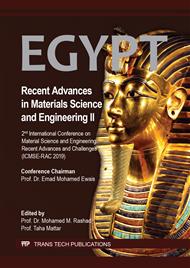p.108
p.115
p.123
p.130
p.135
p.141
p.149
p.155
p.163
Microscopic and Metallurgical Studies as a Function on Forensic Investigation of Electrical Fires
Abstract:
Electrical wires with melted ends showing beaded, drop-shaped, and pointed shapes are frequently encountered after fires that may provide useful information on the cause and development of the fire.Various methods have been studied for differentiating between primary arcing beads, (indicating arcing as the fire cause) and secondary arcing beads (indicating arcing as a result of the fire). There are few studies carried out on the melting globules produced due to fire heat. Also, in some major cases, primary arcing beads and secondary arcing beads are difficult to be identified by using one method. In this study, a full scheme of differentiating methods between simulated samples of melting globules, primary arcing beads and secondary arcing beads are processed with macroscopic investigation. The in-depth composition of carbon quantitative analysis and metallurgical analysis of these samples have been studied. The results of this study has proved that the real cases are compatible with simulated ones.
Info:
Periodical:
Pages:
135-140
Citation:
Online since:
March 2020
Authors:
Keywords:
Price:
Сopyright:
© 2020 Trans Tech Publications Ltd. All Rights Reserved
Share:
Citation:


